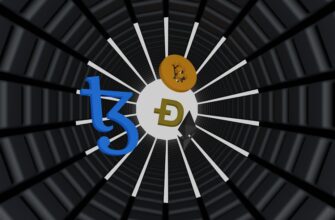## Unlocking DeFi Opportunities: Depositing SOL on Aave Flexible
Aave Flexible (part of Aave V3) revolutionizes decentralized finance by offering dynamic interest rates and enhanced capital efficiency. While many seek to deposit Solana (SOL) directly, **Aave doesn’t natively support the Solana blockchain**. Instead, you’ll use **wrapped SOL (wSOL)** on Ethereum-compatible networks. This guide demystifies the process, risks, and alternatives for leveraging your SOL holdings on Aave.
## Why Consider Depositing SOL on Aave Flexible?
Depositing crypto assets like SOL via Aave Flexible unlocks powerful benefits:
– **Earn passive income**: Generate yield through lending protocols
– **Borrowing power**: Use deposited assets as collateral for loans
– **Capital efficiency**: Access “eMode” for higher LTV ratios with correlated assets
– **Liquidity mining**: Potential eligibility for platform rewards
– **Cross-chain flexibility**: Operate across 7+ supported networks (Polygon, Avalanche, etc.)
## Step-by-Step: How to Deposit SOL on Aave via Wrapped Tokens
### Prerequisites:
1. SOL tokens in a Solana wallet (e.g., Phantom)
2. Web3 wallet for EVM chains (MetaMask, Rabby)
3. ETH/MATIC for gas fees (depending on target chain)
### Process:
1. **Bridge SOL to wSOL**
– Use a cross-chain bridge (Wormhole/Allbridge recommended)
– Connect Solana wallet + EVM wallet
– Select SOL → wSOL and destination chain (Ethereum/Polygon)
– Confirm transactions on both networks
2. **Access Aave Interface**
– Navigate to [app.aave.com](https://app.aave.com)
– Connect Web3 wallet
– Switch network to match wSOL location
3. **Deposit wSOL**
– Select “Deposit” in dashboard
– Choose wSOL from asset list
– Enter amount (leave buffer for gas)
– Approve token contract (first-time only)
– Confirm deposit transaction
4. **Manage Position**
– Track accrued interest in “Your Deposits”
– Adjust collateral/borrowing settings
– Withdraw anytime (subject to liquidity)
## Critical Risks & Mitigation Strategies
– **Bridge Vulnerabilities**: Use audited bridges; split large transfers
– **Smart Contract Risk**: Monitor Aave’s real-time security status
– **Impermanent Loss**: wSOL may depeg from SOL during volatility
– **Liquidity Crunch**: Check reserve status before large withdrawals
– **Gas Fee Spikes**: Schedule transactions during off-peak hours
## Top Alternatives for SOL DeFi Yield
If wSOL on Aave seems complex, consider:
1. **Solana Native Platforms**:
– Marinade Finance (liquid staking)
– Kamino (lending/borrowing)
– Marginfi (leveraged yield)
2. **Cross-Chain Solutions**:
– Portal Bridge → Deposit on Ethereum L2s
– Jupiter DEX → Swap to stablecoins for Aave deposits
3. **Centralized Options**:
– Coinearn programs (simpler but custodial)
## FAQ: Depositing SOL on Aave Flexible
**Q: Can I deposit native SOL directly on Aave?**
A: No. Aave operates on EVM chains only. You must bridge SOL to wSOL first.
**Q: Which chains support wSOL deposits?**
A: Ethereum, Polygon, Avalanche, and Optimism via Aave V3.
**Q: What’s the minimum SOL deposit?**
A: No minimum, but ensure sufficient ETH/MATIC for 3-5 transactions (≈$10-$50 total).
**Q: How are interest rates calculated?**
A: Rates adjust algorithmically based on pool utilization. Current wSOL APY: 1-3% (check Aave dashboard for real-time data).
**Q: Can I borrow against wSOL collateral?**
A: Yes! wSOL typically has 65-75% loan-to-value ratio in Aave V3.
**Q: Is wrapped SOL safe?**
A: Reputable bridges use audited, non-custodial contracts. Avoid unaudited platforms.
## Final Considerations
While depositing SOL on Aave requires bridging to wSOL, it unlocks Ethereum’s robust DeFi ecosystem. Always:
– Verify contract addresses manually
– Start with small test transactions
– Monitor health factors if borrowing
– Diversify across protocols
For pure Solana exposure, native platforms offer streamlined access, but Aave provides unparalleled cross-chain flexibility. As Layer-2 solutions evolve, expect smoother SOL integration in multi-chain DeFi.








